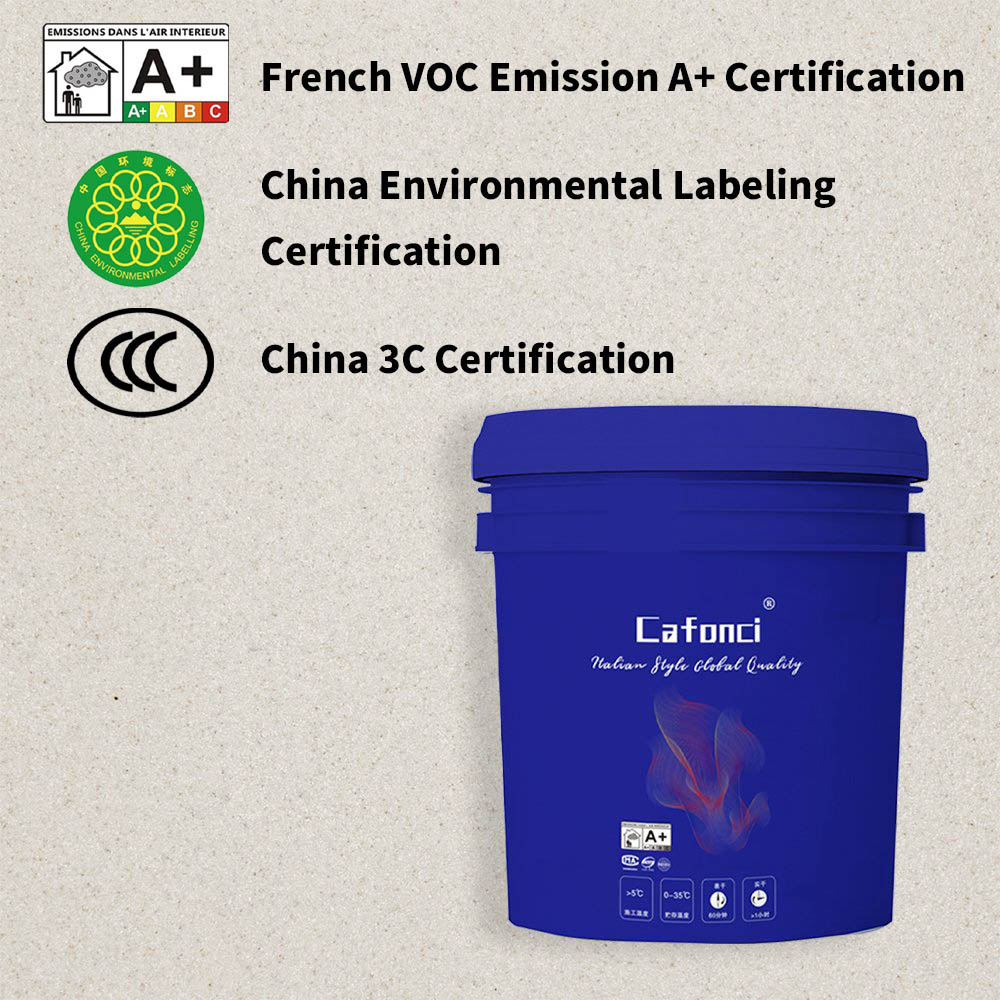Dampness in homes is more than just an eyesore—it’s a silent threat that can compromise structural integrity, trigger mold growth, and even affect indoor air quality. From peeling paint and musty odors to rotting wood and health issues like allergies, the consequences of unchecked moisture are far-reaching. Fortunately, modern building solutions offer a powerful defense: elastic wall coating. In this ultimate guide, we’ll explore how elastic wall coating works, its key benefits, ideal applications, step-by-step installation tips, and how to choose the right product to keep your home dry and protected.

#What Is Elastic Wall Coating?
Elastic wall coating is a specialized paint-like material designed to create a flexible, waterproof barrier on interior or exterior walls. Unlike traditional rigid paints, it contains high-performance elastic polymers (such as acrylic or polyurethane) that allow it to stretch and contract with the wall’s natural movements—expanding in heat, shrinking in cold, and bridging small cracks that form over time. This flexibility is its superpower: while rigid coatings crack under stress, elastic coatings maintain a seamless seal, preventing water from seeping through.
Most elastic coatings also include additives like biocides (to resist mold), UV stabilizers (for outdoor use), and adhesion promoters (to bond tightly to surfaces). They come in liquid form, applied with brushes, rollers, or sprayers, and dry to form a durable, rubber-like membrane that’s both waterproof and breathable—allowing trapped moisture inside walls to escape without letting external water in.
#How Does Elastic Wall Coating Solve Damp Problems?
Dampness typically enters homes through three main paths: penetrating damp (water seeping through walls from outside, e.g., rain), rising damp (moisture wicking up from the ground), and condensation (humidity turning to liquid on cold surfaces). Elastic wall coating targets the first two by acting as a physical barrier.
For penetrating damp, its waterproof membrane blocks rain, snow, or splashes from soaking into exterior walls. For rising damp (common in basements or old homes with poor drainage), it creates a barrier at the base of walls to stop moisture from climbing. Even better, its breathability prevents “trapped” moisture—if water does get behind the coating (e.g., from a leak), it can evaporate outward, reducing the risk of mold.
#Key Benefits of Elastic Wall Coating for Homes
1. Long-Lasting Damp Protection: Unlike temporary fixes like sealants or waterproof tapes, elastic coatings are designed to last 10–15 years (or more with proper maintenance). Their elasticity ensures they don’t crack or peel as walls shift, maintaining protection for decades.
2. Crack Bridging: Small cracks (up to 2mm, depending on the product) are common in walls due to settling or temperature changes. Elastic coatings stretch to cover these cracks, preventing water from seeping through and turning minor issues into major ones.
3. All-Weather Durability: Exterior elastic coatings resist UV rays, extreme temperatures, and harsh weather (rain, snow, wind), making them ideal for outdoor use. Interior versions stand up to humidity, steam (e.g., in bathrooms), and daily wear.
4. Aesthetic Versatility: Available in a range of colors and finishes (matte, satin, gloss), elastic coatings don’t just protect—they enhance your home’s look. They can be tinted to match your decor, ensuring functionality without sacrificing style.
5. Eco-Friendly Options: Many modern elastic coatings are low in volatile organic compounds (VOCs), meaning they release fewer harmful fumes during and after application. This is safer for your family and the environment.
#Ideal Areas to Use Elastic Wall Coating
Elastic wall coating shines in high-moisture zones, but its versatility makes it useful throughout the home:
- Exterior Walls: Protects against rain, snow, and wind-driven moisture, reducing water damage and extending the life of siding or brickwork.
- Basements & Crawl Spaces: Stops rising damp and groundwater seepage, transforming damp, unusable spaces into dry, livable areas.
- Bathrooms & Kitchens: Resists steam and splashes, preventing mold in showers, around sinks, or behind appliances.
- Laundry Rooms: Guards against washing machine leaks or high humidity, keeping walls dry and odor-free.
#Step-by-Step Application Guide
Applying elastic wall coating isn’t overly complex, but proper preparation is key to maximizing its effectiveness. Here’s how to do it:
##1. Surface Preparation
- Clean the Wall: Remove dirt, dust, grease, or old peeling paint using a pressure washer (for exteriors) or a damp cloth with mild detergent (for interiors). Let the surface dry completely—moisture trapped under the coating will cause peeling.
- Repair Cracks & Holes: Fill small cracks (up to 1mm) with a flexible filler; for larger gaps, use a mortar mix or patching compound. Sand the surface smooth once dry to ensure the coating adheres evenly.
- Prime (If Needed): Some elastic coatings require a primer, especially on porous surfaces like concrete or bare wood. Check the product instructions—primer improves adhesion and enhances waterproofing.
##2. Applying the Coating
- Choose Tools: Use a high-quality roller (for large areas), brush (for edges/corners), or sprayer (for exteriors). Avoid cheap rollers, as they may leave lint or uneven texture.
- Apply Thin, Even Coats: Elastic coating works best with 2–3 thin coats rather than one thick layer. Allow each coat to dry completely (check the product for drying time—typically 4–6 hours between coats).
- Direction Matters: Apply the first coat horizontally, the second vertically, to ensure full coverage and minimize streaks.
##3. Curing Time
Let the final coat cure fully (24–48 hours for interior, 48–72 hours for exterior, depending on humidity). Avoid exposing the surface to water during this period to ensure the membrane sets properly.
#How to Choose the Right Elastic Wall Coating
Not all elastic coatings are created equal. To pick the best one for your home:
- Check Elasticity Rating: Look for products rated to bridge cracks of at least 1mm (higher is better for older homes with shifting walls).
- Waterproof Certification: Opt for coatings tested to international standards (e.g., EN 13967 for waterproofing) to ensure they meet performance claims.
- VOC Content: Choose low-VOC or zero-VOC options for indoor use to reduce fumes and improve air quality.
- Finish & Color: Decide on matte, satin, or gloss based on your aesthetic—matte hides imperfections, while gloss is easier to clean (great for kitchens/bathrooms).
- Brand Reputation: Stick to trusted brands with positive reviews; cheaper, untested products may fail prematurely.
#Maintenance Tips to Extend Lifespan
With minimal care, elastic wall coating will protect your home for years:
- Regular Inspections: Check exterior walls annually for cracks, peeling, or damage (especially after storms). Interior walls in high-moisture areas should be inspected every 6 months.
- Clean Gently: Wipe interior walls with a damp cloth and mild soap; avoid harsh chemicals or abrasive sponges that could damage the coating.
- Patch Small Issues: If you notice a tiny crack or chip, clean the area and apply a small amount of leftover coating to seal it before water seeps in.
#Final Thoughts
Elastic wall coating is more than a paint—it’s a long-term investment in your home’s health and durability. By creating a flexible, waterproof barrier that adapts to your walls’ movements, it stops dampness in its tracks, preventing mold, structural damage, and costly repairs. Whether you’re renovating a basement, weatherproofing exterior walls, or upgrading your bathroom, elastic wall coating offers a reliable, aesthetically pleasing solution to keep your home dry, safe, and comfortable for years to come. Don’t let dampness take over—arm your walls with the protection they deserve.



